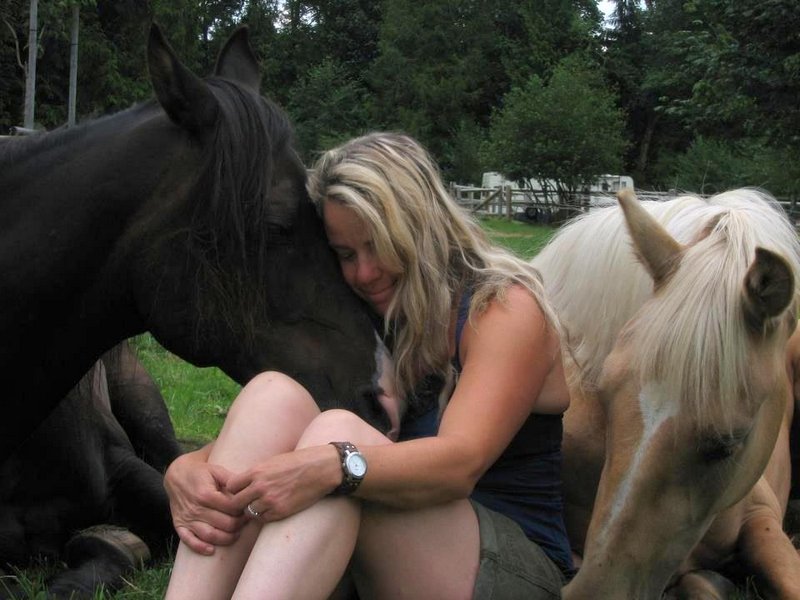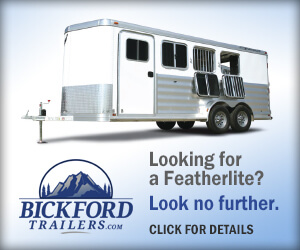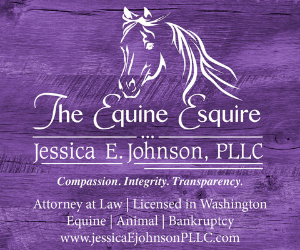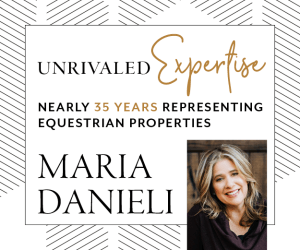Monica Uruchurtu is a licensed equine structural integration therapist living in Whatcom County, Washington. She’s been a lifelong horse (and mule) enthusiast, is an avid trail rider, and an Australian Cattle Dog lover. She is so passionate about her work she prefers not to call it a job—it’s her calling.
How long have you been doing structural integration? What is it?
I began equine structural integration training five years ago. I finished the two-year program in one year at the Equine Natural Movement School in Battle Ground, Washington. I already knew what a profound difference structural integration makes for humans and wanted to do the same for horses.
Structural integration is an aspect of osteopathic medicine as it looks at the whole body. Skeletal alignment, posture, muscle look, feel, and function, visceral tensions, gait abnormalities, and mental health are just a few of the key components of structural integration.
What led you to this career choice?
I’ve ridden equines my whole life— since I was an infant thanks to my Tia Elsa. I’ve always felt a strong connection with them. So, when I decided I was done working in the restaurant industry and my outfitter business, Cascade Sherpas, could only operate a few months of the year, I wanted to do something that would really make a difference for equines and their human partners.
I wanted to do healing work for horses and mules that’s not only rehabilitative and progressive but is also preventative. This approach shows the truth of what is really going on instead of merely seeing the compensations.
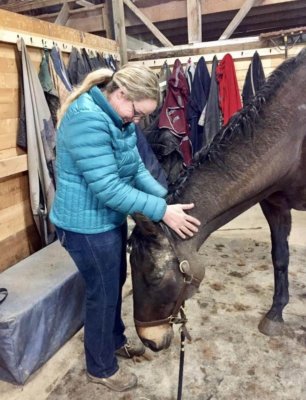 What’s the most rewarding part about working with horses in this way? Can you describe any particular success stories?
What’s the most rewarding part about working with horses in this way? Can you describe any particular success stories?
Honestly, every single part of what happens with equines is rewarding—the changed demeanor and movement, the baby steps to the giant leaps of progressive healing, the changed look in their eyes and the nickers I get!
There are many success stories. A notable one is a story of a small Appaloosa who was in so much pain he was dangerous. By the third session I was able to begin physically diving into his fascial adhesions/scars and by the time I did my last session on him, he was practically falling asleep with his head on my back as I worked on his front legs. To this day he is still a happy horse that is ridden by his family, safely. I am so grateful the family didn’t give up on him.
What’s the most difficult part of this work?
The hardest part is seeing and feeling the equines’ pain. Equines do so much for us even when they are in pain. Another difficult aspect of my work is when I have reduced the compensations throughout the body and the truth presents itself as something that can’t be changed, such as arthritis in a joint. I empathize greatly with the owner as I have seven of my own and don’t hesitate to call on the expertise of a veterinarian.
What are unexpected or surprising parts of the job?
I go into each session with no expectations. Each equine is an individual. I always find differences between sessions. The worried horses will usually hold on to tensions longer but even those horses have happily surprised me at every session.
What are the most common problems you encounter?
The typical issues I find are the ribs, skull, and pelvis are out of alignment. Also common is the barrel being rolled. I often hear about the unwillingness of the horse to do what is asked. It’s not that the equine doesn’t understand, it’s that it physically can’t do it. The physical tensions are so tight and deep it creates what I call “cement”. When you have a body full of cement, no amount of training will create the desired effect.
What do you wish more horse people would do differently with and for their horses?
I would (and do) teach people how to listen to their equine partner better. Horses’ communication begins with a whisper at their chin bulb, then their lips and nostrils. When it reaches the eyes and ears they are already speaking loudly and when they bite or buck, they are screaming. I also teach folks how to touch their equine partner and learn what healthy tissue feels like. Equines are prey animals that thrive in a herd situation. They are emotional creatures that are concerned with survival. They are never calculating or scheming.
At the physical end of it good, consistent equine dentistry and farrier work are most important. Proper saddle fit and bitting are equally important. And lastly, to always mount from something higher than the ground and from both sides.
What are your goals for your business?
I have a strong desire to help heal as many horses and mules as possible and improve the relationship between the equines and their humans. I love to travel. I’m blessed that my work goes wherever there are equines in need of whole-body healing.
Monica Uruchurtu can be reached at www.cascadesherpas.com, [email protected], or by cell 360-303-5647.
See this article in the 2020 November online edition:
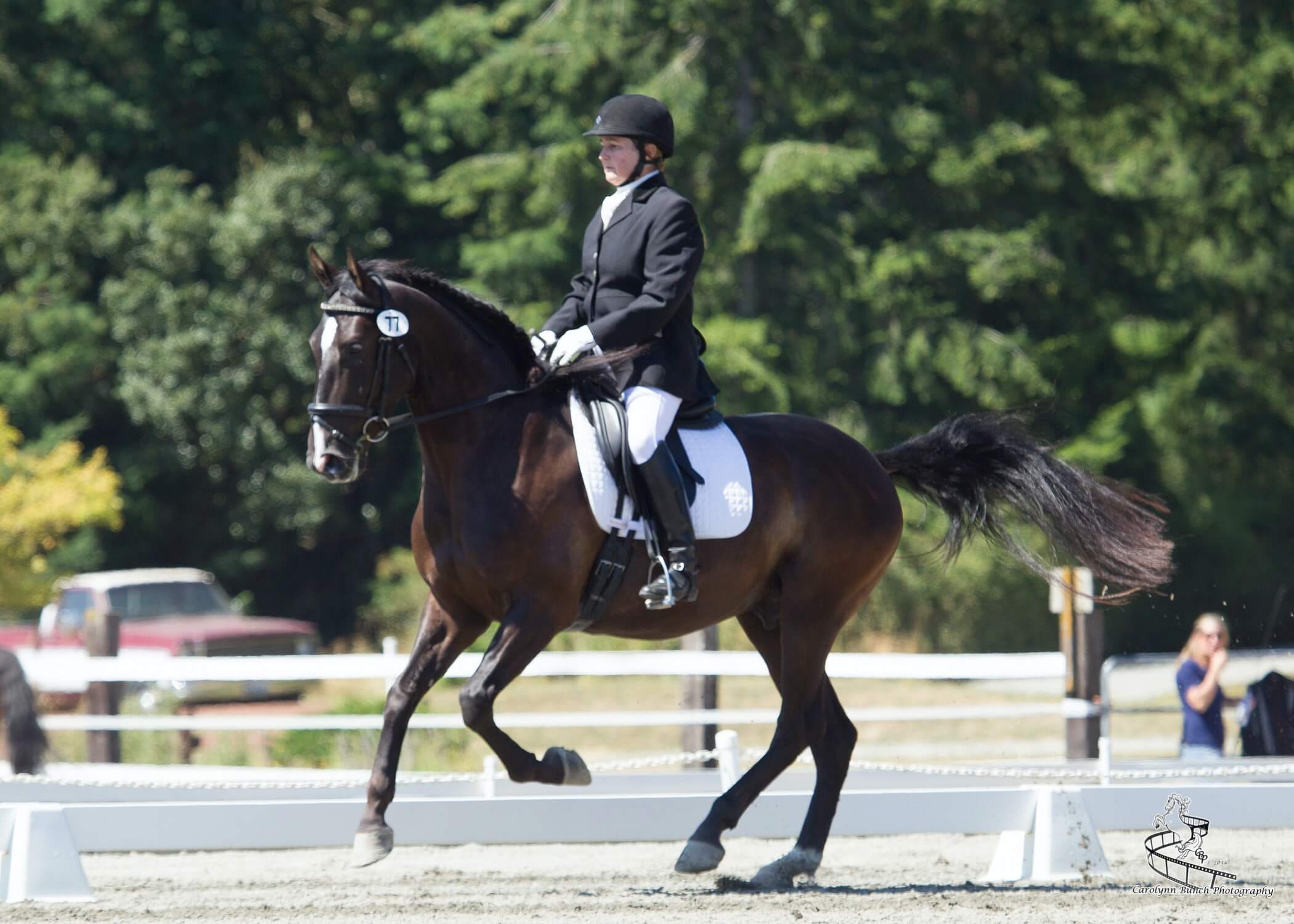
Kim Roe grew up riding on the family ranch and competed in Western rail classes, trail horse, reining, working cow, and hunter/jumper. She trained her first horse for money at 12 years old, starting a pony for a neighbor.
Kim has been a professional dressage instructor in Washington state for over 30 years, training hundreds of horses and students through the levels. In recent years Kim has become involved in Working Equitation and is a small ‘r’ Working Equitation judge with WE United.
Kim is the editor of the Northwest Horse Source Magazine, and also a writer, photographer, and poet. She owns and manages Blue Gate Farm in Deming, Washington where she continues to be passionate about helping horses and riders in many disciplines.


